Key takeaways:
- Understanding and addressing student feedback fosters a sense of connection and engagement, enhancing the learning experience.
- Creating an inclusive environment where diverse perspectives are welcomed leads to richer discussions and deeper understanding in religious education.
- Implementing changes based on feedback cultivates a culture of reflection, encouraging students to take ownership of their learning.
- Clear communication and relatable examples are essential in addressing misconceptions, helping students connect ancient teachings to modern life.
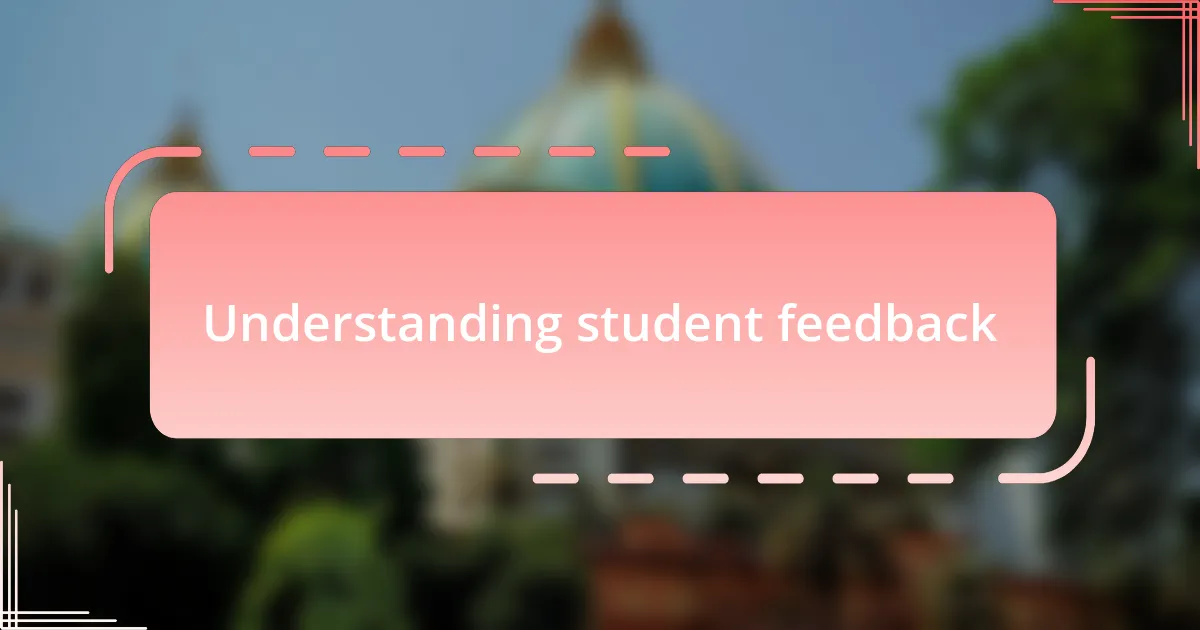
Understanding student feedback
Understanding student feedback is crucial for anyone involved in education, especially in a field as nuanced as religious studies. I remember receiving a comment from a student who felt disconnected from the material, expressing how certain texts seemed outdated and unrelatable. It made me ponder: How can we ensure our content resonates with diverse backgrounds and experiences?
Feedback isn’t just about surface-level opinions; it reveals deeper trends and feelings. For instance, a student once noted that discussions in class felt one-sided. Initially, I brushed it off, but reflecting on it helped me recognize how crucial it is to create a safe space for students to share their perspectives. I realized that if students don’t feel heard, they won’t engage as fully.
When I think about the feedback process, I often wonder about the emotional weight behind each response. One student candidly shared how a particular lesson encouraged personal reflection on their beliefs, but another felt overwhelmed. This contrast highlights the importance of tailoring our approach. It’s a reminder that understanding student feedback demands empathy alongside analysis.
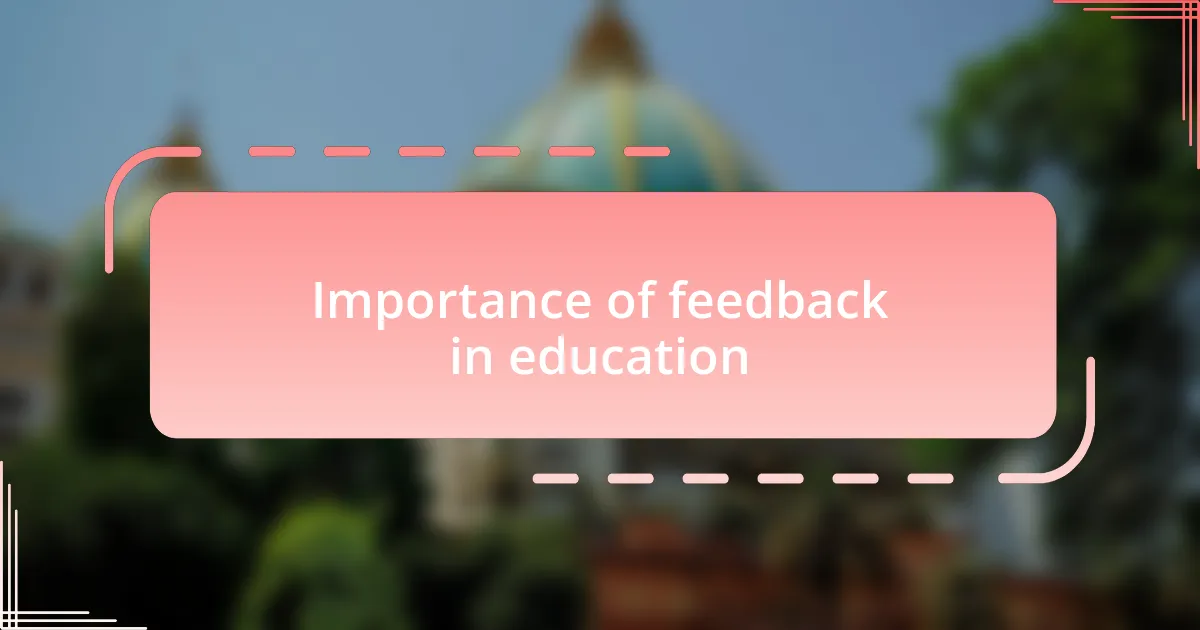
Importance of feedback in education
Feedback serves as a vital pulse check in education, offering insight into how well our teachings resonate with students. I recall a time when I changed my teaching approach after a student’s comment about a lesson; their feedback helped me realize that I was moving too fast through critical concepts. It made me think about how many other students might be silently struggling, reminding me that feedback can illuminate unspoken challenges.
The importance of feedback is often underestimated. One semester, I received a heartfelt email from a student who expressed how a particular assignment felt disconnected from their personal beliefs. Instead of taking it as criticism, I viewed it as an opportunity to adapt my curriculum. This experience reinforced my belief that open lines of communication can foster mutual growth and understanding.
Additionally, feedback encourages a culture of reflection and improvement. For instance, after implementing student suggestions for a group project, I was amazed at the increased enthusiasm and collaboration among them. It got me wondering—how often do we overlook our students’ voices, assuming we know what’s best for them? Listening can transform not only individual learning experiences but also enrich the entire educational environment.
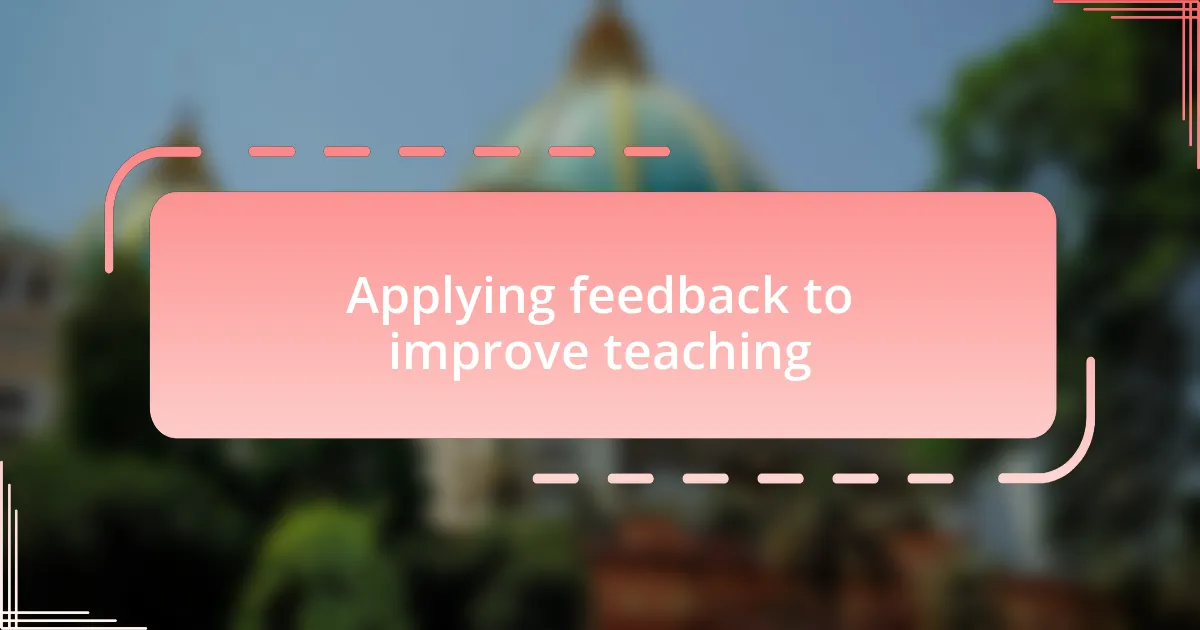
Applying feedback to improve teaching
One of the most impactful changes I made was after I took a moment to truly listen to my students’ concerns about a new assessment format. They felt overwhelmed and confused by its structure. I decided to simplify the criteria and provide clearer examples, and what a difference it made! Students expressed relief and gratitude, and their improved performances spoke volumes about how important clarity and empathy are in teaching.
I’ve also found that conducting anonymous surveys can reveal surprising insights. During one semester, I invited feedback on my teaching methods, expecting mostly positive responses. Instead, I discovered that many students felt disengaged during lectures. This revelation prompted me to incorporate more interactive activities, igniting a spark in the classroom that I hadn’t realized was dimming. Reflecting on their thoughts taught me that vulnerability is key; it shows students that we value their experiences.
Moreover, I believe that implementing changes based on feedback is an ongoing journey. After adjusting a curriculum unit based on student input, I continued to solicit their thoughts through follow-up discussions. This ongoing dialogue not only enhanced their learning but also cultivated a sense of ownership in the educational process. How can we create a space where students feel empowered to express their thoughts consistently? By weaving their insights into our teaching strategies, we not only elevate our classrooms but also deepen our connections with students.
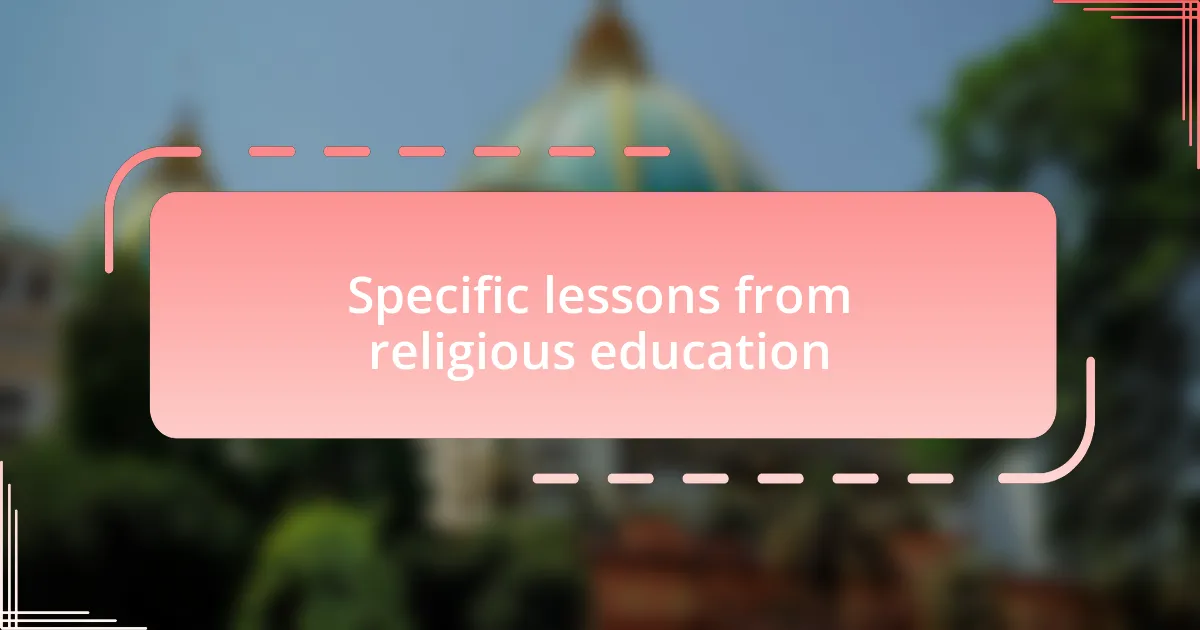
Specific lessons from religious education
In my experience, one of the specific lessons from religious education is the power of storytelling. During a unit on parables, students not only engaged more deeply with the material, but they also began sharing their own stories. This connection allowed them to relate biblical teachings to their personal lives, creating meaningful discussions that fostered a sense of community. It made me realize how vital it is to encourage students to see their own narratives within the larger context of their faith.
Another key takeaway revolves around the value of questioning. I remember a moment in class when a student asked what love really meant in a biblical sense. This simple yet profound question opened up a dialogue that transcended the textbook. It encouraged everyone to reflect on how the concept of love influences our daily lives, showing me that when students feel safe to ask these deeper questions, they engage with their faith on a much more personal level. How often do we take the time to explore these inquiries in our own teaching?
Furthermore, I learned that it’s crucial to create an environment where diverse perspectives are welcomed. After introducing comparative religious studies, I noticed students expressing opinions they may have kept to themselves before. This inclusivity not only enriched our discussions but also allowed students to appreciate different beliefs, promoting respect and understanding. This has been a transformative experience, highlighting that fostering openness in religious education can lead to a broader worldview for everyone involved.
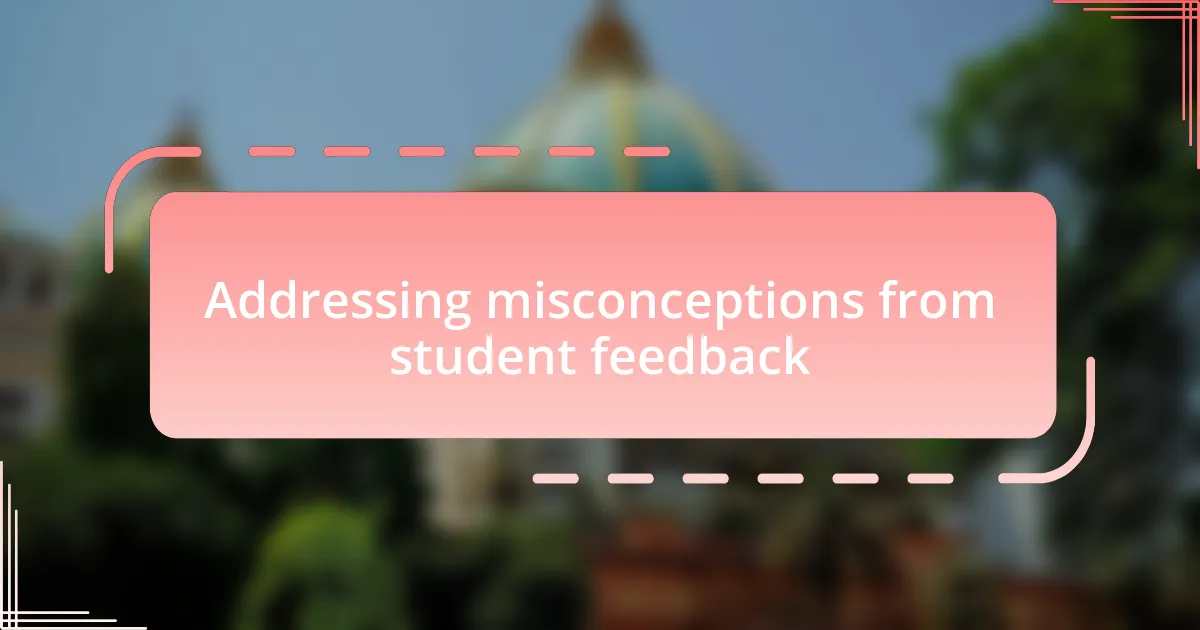
Addressing misconceptions from student feedback
When I reviewed student feedback, I often found that misconceptions about faith traditions were common. One student expressed confusion about the role of rituals, thinking they were merely outdated practices without significance. This moment compelled me to clarify that rituals are often deeply rooted in values and beliefs, serving as vital expressions of faith that connect individuals to their community and history. Isn’t it fascinating how such misunderstandings can overshadow the richness of a tradition?
Another poignant instance arose when a student voiced the belief that there was only one correct interpretation of sacred texts. This misconception struck me because it limited the students’ understanding of the depth and variety within religious teachings. I took the opportunity to discuss the importance of context and perspective, highlighting how interpretations evolve and can vary across cultures. Reflecting on this, I ponder—how can we instill a greater appreciation for the diverse voices within religious discourse?
Through addressing misconceptions, I have learned the value of providing clear, relatable explanations. For example, when discussing moral teachings, I shared stories from contemporary society that mirrored biblical lessons. This approach enabled students to see the relevance of these teachings in today’s world, bridging the gap between ancient wisdom and modern life. Have you experienced a moment when clarity transformed a student’s understanding? It can be incredibly rewarding to witness that lightbulb moment, knowing you’ve opened a new perspective for them.
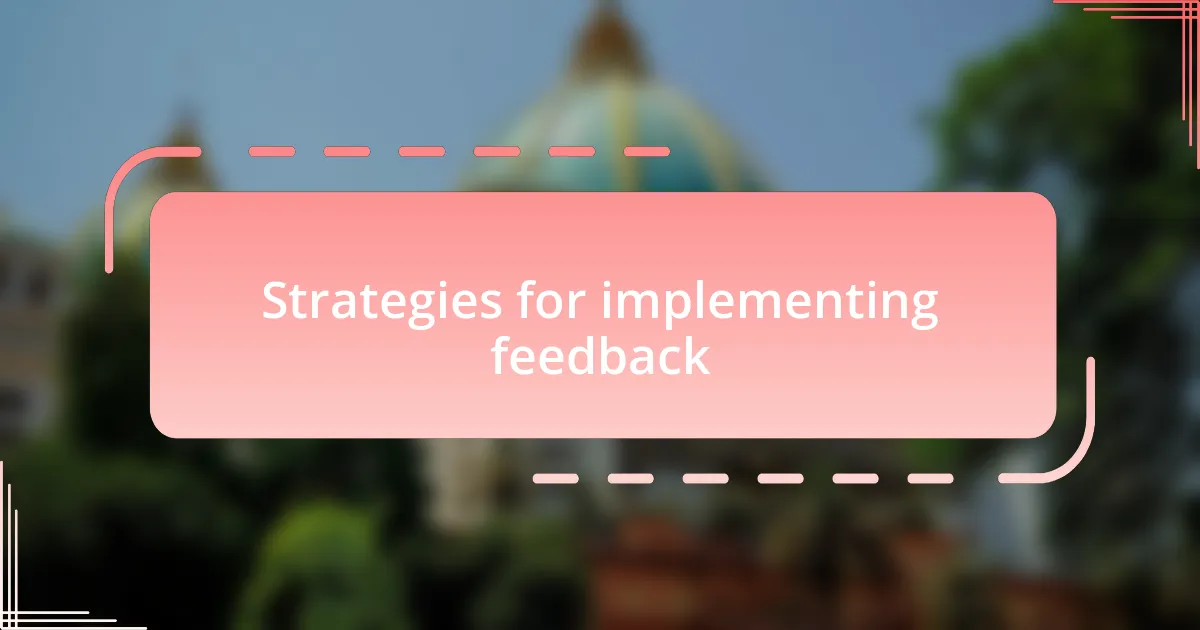
Strategies for implementing feedback
One effective strategy I’ve implemented is creating feedback loops. After a lesson, I often ask students for their thoughts on what we discussed, specifically focusing on aspects they found unclear or intriguing. It amazed me how some students were willing to open up about their misunderstandings when prompted. This dialogue not only helps me tailor my teaching approach but also encourages students to actively engage in their learning process. Have you ever considered how simple questions could unlock deeper insights?
Another approach I’ve found valuable is collaborative reflection sessions. I remember hosting a small group discussion where students shared their interpretations of a complex religious concept. Not only did this foster a sense of community, but it also allowed students to see that others shared similar uncertainties. Discussions like this reveal the power of group learning—sometimes, a peer’s explanation can resonate more profoundly than my own. Isn’t it wonderful how collective exploration can clarify individual confusion?
Lastly, I consistently link feedback to real-life applications. For example, when exploring ethical dilemmas in religious texts, I ask students to relate them to current events or personal experiences. I vividly recall a conversation where a student connected a parable to a recent news story. Watching them draw parallels sparked excitement in the classroom, illustrating the relevance of faith in their daily lives. How often do we overlook these connections that can enhance understanding and engagement?
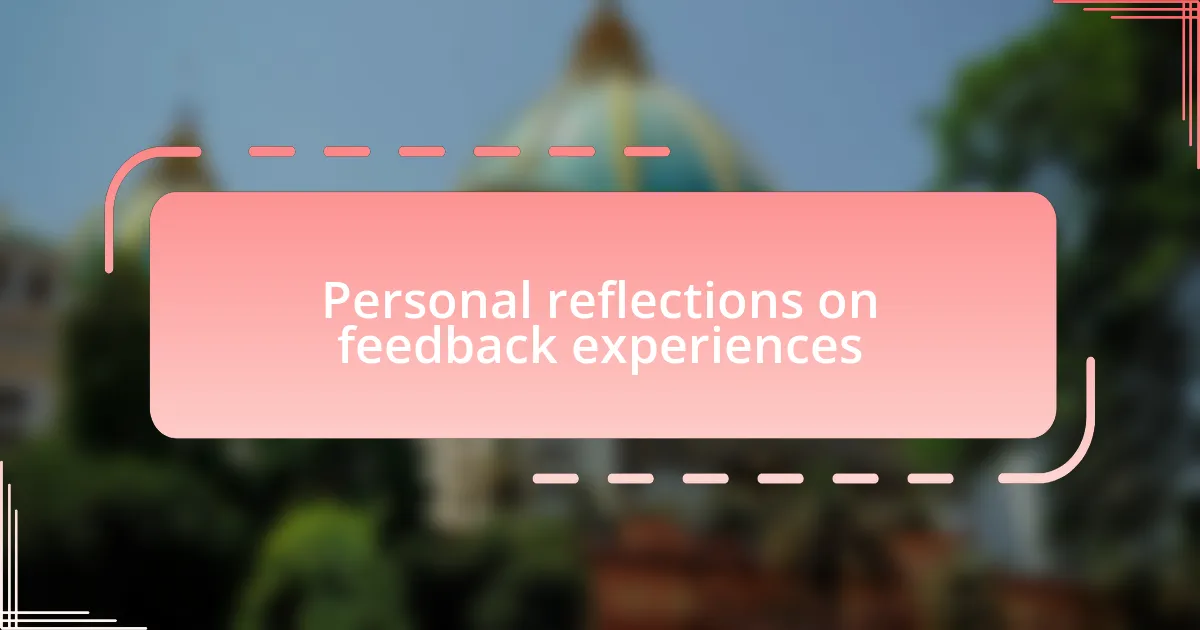
Personal reflections on feedback experiences
Reflecting on my experiences with student feedback, I’ve often felt a mix of gratitude and surprise. One time, a student candidly shared how a lesson on compassion felt disconnected from their reality. Their honesty prompted me to reconsider my examples and teaching style. This experience taught me that vulnerability can lead to invaluable insights—how often do we, as educators, find ourselves stuck in our own perspectives?
In another instance, I was struck by a student’s response during a feedback session. They expressed how discussions about faith helped them navigate their uncertainties about identity. It was a moment of connection that reminded me of the profound impact our conversations can have. This reaffirmed my belief that listening to students isn’t just about improving lessons; it’s about nurturing their spiritual and emotional journeys. Have you ever realized how deeply a simple conversation can resonate with a learner’s heart?
I’ve also learned to approach feedback as a two-way street. A student’s critique once led me to redesign an entire unit I was proud of but they found confusing. Their perspective opened my eyes to gaps I hadn’t noticed. This reshaping of curriculum based on their input made me appreciate the collaborative nature of education—how do we balance our expertise with the fresh perspectives our students offer? Such moments of revelation continue to shape my teaching philosophy.